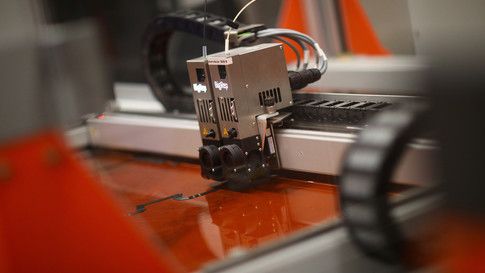Affetto has been fitted with synthetic skin, which enables it to react to being touched. It is hoped such developments will allow robots to have a deeper interaction with humans.




The future of bioprinting looks promising from a technical and scientific perspective, but it’s far from clear how it will be regulated.
Australian scientists have made a key breakthrough in a desperate bid to develop a vaccine for the killer coronavirus.
Researchers at the University of Queensland are making a fast-tracked attempt to make a cure for the disease, which has killed more than 2,200 people worldwide.
There are now dozens of Australians suffering from the respiratory disease, with 47 contracting it on the Diamond Princess cruise ship in Japan.
I recently interviewed David Pearce, co-founder of the World Transhumanist Association (now Humanity+). We discuss how the transhumanist movement has changed over the past couple of decades, what obstacles it faces and how it should engage with politics. Planning a whole series of interviews on transhumanism/futurism related topics on the channel so please do subscribe if that interests you!
My interview with David Pearce, a leading transhumanist thinker and co-founder of the World Transhumanist Association (now Humanity+). We discuss how the transhumanist movement has changed over the past couple of decades, what obstacles it faces and whether the technologies it advocates could end all human and animal suffering.
My Twitter: @JBickertonUK
David’s Twitter: @webmasterdave
I recently interviewed Professor David J. Gunkel, an expert in robot ethics at Northern Illinois University about the future of AI and the transhumanist movement. If this is your thing please do subscribe to the channel — lots more coming up smile
I interview Professor David J. Gunkel (@David_Gunkel), an expert in AI and robot ethnics at Northern Illinois University and author of ‘The Machine Question: Critical Perspectives on AI, Robots, and Ethics’. We discuss whether robots should have rights, if human and artificial intelligence are likely to merge and whether the transhumanist movement could become a serious political force. Hope you enjoy!
Enjoy the videos and music you love, upload original content, and share it all with friends, family, and the world on YouTube.

#Israeli-made transportation app Moovit is continuing its global expansion and now provides its #urban mobility service in a total of 100 countries.
Moovit uses up to six billion anonymous data points daily, the company says, “to add to the world’s largest repository of transit and urban mobility data.” In addition to its popular app, the Ness Ziona-headquartered company also provides analytics platforms to cities, transit authorities and businesses, enabling optimized planning and operations for residents and employees.
“Urban mobility is the lifeline to jobs, healthcare, and education, so we are so proud that in just a few years Moovit is now providing service to millions of users in 100 countries, helping them get from A to B with confidence and convenience,” said Moovit co-founder and CEO Nir Erez.
“We have grown drastically, from offering a consumer app, to also now licensing a multitude of MaaS solutions to cities, governments, and transit agencies. We are also glad to see the likes of Uber, Microsoft, and Cubic choosing Moovit’s high-quality MaaS platform to power their mobility offering.
Moovit also announced the appointment of Uli Gal-Oz as the company’s new vice-president of business development. Gal-Oz, who most recently served as vice-president of business development at Magisto prior to its $200 million acquisition by Vimeo, will be tasked with overseeing Moovit’s initiatives with strategic partners and customers — including Uber, Microsoft and Cubic.
